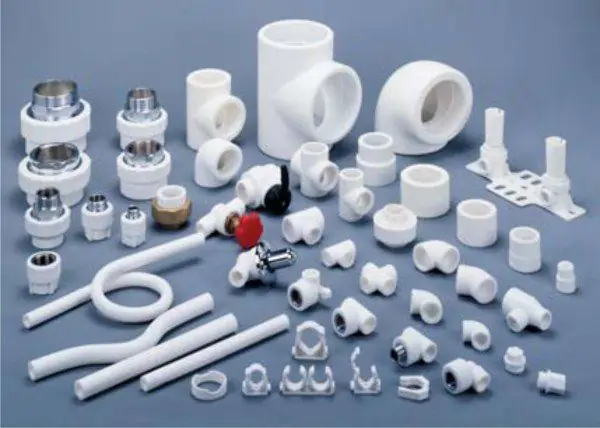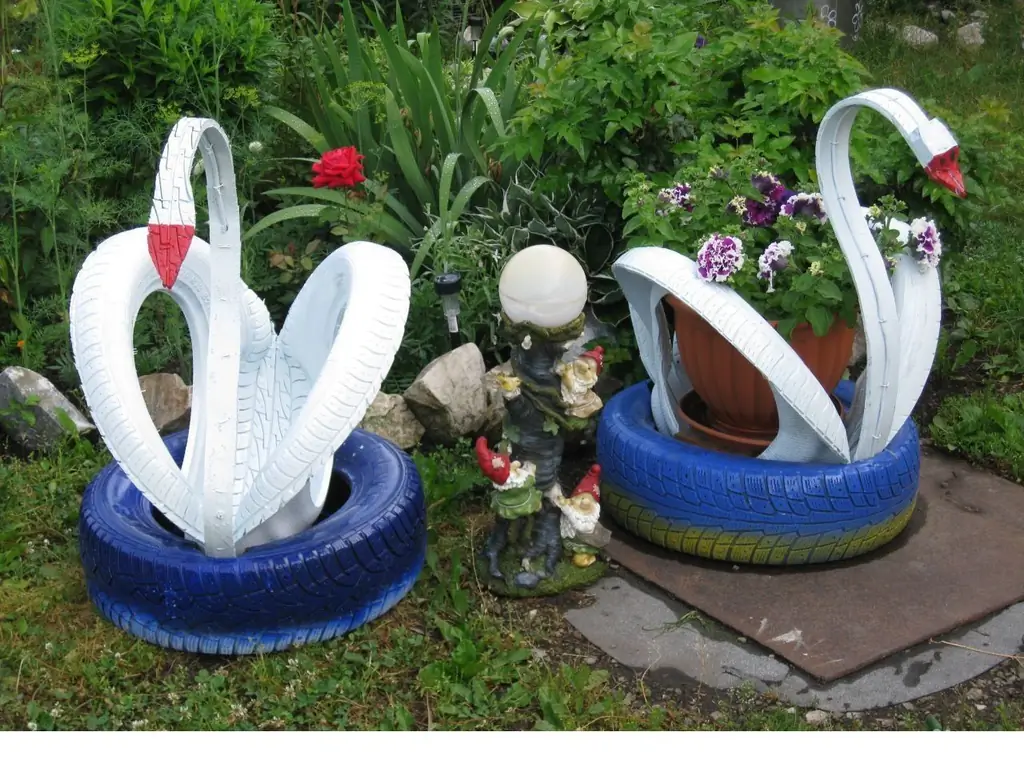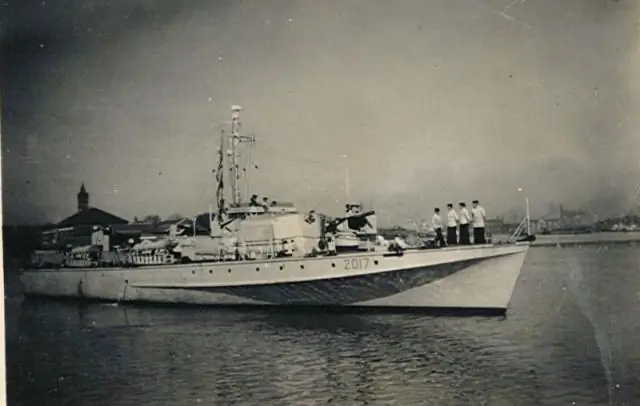
Table of contents:
- Down with outdated metal: install polypropylene pipes ourselves
- Everything you need to know about polypropylene pipes
- Installation diagram of polypropylene pipes
- Materials and tools that will be needed in the installation of polypropylene pipes
- DIY plumbing installation from polypropylene pipes
- Sewer polypropylene pipes: features, differences, choice
- Video about the installation of polypropylene pipes
- Author Bailey Albertson [email protected].
- Public 2023-12-17 12:53.
- Last modified 2025-01-23 12:41.
Down with outdated metal: install polypropylene pipes ourselves
The advantageous difference between polypropylene pipes and other types of these construction and repair materials is their low cost and easy assembly technology. Of course, the installation of polypropylene pipes has its own subtleties, knowledge and adherence to which is necessary. But as practice shows, a pipeline made of such materials rarely leaks, and only in cases where the soldering technology has been violated.
Should you start installing a water supply system from polypropylene pipes yourself? Definitely worth it. Thus, you will not only save on the repair of the bathroom or sewage, but you will also be able to do the job the way you need it.
The most important thing is to strictly adhere to the rules of installation technology. We will tell you how to avoid mistakes and do the job professionally.
Content
- 1 Everything you need to know about polypropylene pipes
- 2 Installation diagram of polypropylene pipes
- 3 Materials and tools that will be needed in the installation of polypropylene pipes
- 4 DIY installation of a water supply system from polypropylene pipes
- 5 Sewer polypropylene pipes: features, differences, choice
- 6 Video about the installation of polypropylene pipes
Everything you need to know about polypropylene pipes
The material from which such pipes are made is called polypropylene copolymer. Their markings are PP-R. In everyday life, these pipes, depending on the type, are used for:
- Cold water supply (cold water supply at an operating temperature of 20 degrees and a pressure of 10 atm);
- Hot water supply (hot water supply at an operating temperature of 60 degrees and a pressure of 10 atm);
- Heating networks (at an operating temperature of 60-90 degrees and a pressure of 6 atm).

When installing polypropylene pipes at home with your own hands, manual polyfusion thermal welding is usually used.
For hot and cold water, you will need to take two types of pipes that differ in wall thickness. Their markings are PN16 and PN10, respectively. For a heating system using water with a temperature of 60-80 degrees, a homogeneous pipe PN20 or combined pipes PN20 Al (polypropylene, stabilized with aluminum) can be used. Pipes of this type have lower thermal elongation relative to homogeneous pipes, but they require a special tool, and their assembly is a little more difficult.
By the way, another plus that distinguishes polypropylene pipes: their plasticity makes it easy to tolerate low temperatures, which is guaranteed to exclude freezing and mechanical damage associated with it.
Installation diagram of polypropylene pipes
Before proceeding with the installation of a water supply system from polypropylene pipes, you need to complete the primary task: to design a pipeline diagram. This will allow you to calculate the amount of materials needed, which means their cost. In addition, a pre-planned work, printed on paper in the form of a diagram, will save you from possible mistakes. There is no need to spend a lot of time, it is enough to take into account all the details and dimensions.
To make the diagram of the future installation of the water supply system convenient with your own hands, take a sheet of paper in a cage. Decide immediately what kind of plumbing and in what places you will install, where the furniture will be. If the room for the bathroom is large enough for you, then the pipes can later be easily hidden behind an additional plasterboard wall.

- Considering the number of pipe turns during installation, make sure that all the necessary parts are in stock. For example, each bend corresponds to a certain type of angle, 45 or 90 degrees.
- The tap installed at the inlet of the water supply system must be reliable and capable of shutting off the water in the apartment well. Be sure to take into account the place for installing water meters, it must be in direct accessibility. Taps and fittings should also be included in your plan.
- To significantly save on the materials used, place the main junctions at the beginning. And in the middle of the diagram. This will give savings in pipe length.
- Tees will also allow you to save money: for example, a branch to the washing machine leaves the branch of the sink. True, you will have to try so that it does not look sloppy afterwards.
To completely simplify your task, you can draw a diagram right on the wall of the bathroom, along with all the details - the place where the pipe passes, the installation of the faucet and tee, and so on.
Materials and tools that will be needed in the installation of polypropylene pipes
After the diagram is calculated and printed on paper, stock up on the necessary tools.
- The main thing that you need is a special iron, that is, a soldering iron for polypropylene pipes. It is cheap, and besides, if you do not deal with plumbing systems all the time, you will not need an expensive device with a long warranty.
- The plastic pipes will need to be cut. For this, special scissors are used. They are also inexpensive, but can be replaced with a metal hacksaw.
- Fittings, tees, angles - all connecting materials - are made of the same material as the pipes, but they are larger in diameter. Just in case, buy them with a margin, as well as pipes.
After all the materials are purchased according to the scheme and all the tools are purchased, proceed to the work process.

First, you will need to dismantle the old plumbing, if there is one in your bathroom. To do this, you need to block the main riser in the apartment. Then carefully remove the pipes, cutting them for convenience in suitable places. Try to avoid unnecessary destruction so that you do not have to deal with the restoration of walls and floors.
You may need to replace all plumbing in the apartment. Such work is more difficult, and will require contacting the housing department, since it will be necessary to block the riser in the house for some time. It is necessary to stipulate this need in advance so that there are no troubles with neighbors.
DIY plumbing installation from polypropylene pipes
Installation work should be started by cutting the pipes into sections of the required length in order to insert them into the fittings and install the taps. Installation of water pipes is carried out from the riser.
Let's start soldering polypropylene pipes with our own hands.

- Read the instructions for your iron: different models may differ slightly from each other and have some peculiarities. Assemble the device according to the instructions and install the required attachment. The size of the nozzle depends on the diameter of the pipes you are using.
- The pipe cut should be clean and smooth, so if you used a hacksaw for cutting, carefully clean the surfaces. Check in the instructions for the iron how long it will take to heat the connecting parts, and then turn on the device.
- After the indicator on the soldering machine indicates the required heating level, take the pipe and fitting and insert them all the way into the nozzle from both sides at the same time. Withstand the required time, usually it is 5-25 seconds, depending on the power of the unit and the pipe diameter.
- After the required time has elapsed, remove the pipe and extension from the nozzle and immediately connect them together. In this position, the parts should be held for 5-10 seconds so that the plastic seizes. If the fitting is angled, consider the direction when welding.
- In the same way, connect the pipes with fittings, moving from the very beginning of the riser to taps and plumbing items. If you do everything right, the connection will never leak, since the surfaces are tightly welded to each other.
The same scheme for installing polypropylene pipes is suitable not only for water supply, but also for sewage equipment. Let's take a closer look at this option.
Sewer polypropylene pipes: features, differences, choice
So, you've decided to replace your old sewer pipes. Nowadays, in almost all cases, the use of polypropylene waste pipes is recommended, and this is due to the resistance to corrosion.
The choice of the diameter of the sewer polypropylene pipe for all elements of the system is especially important. Let's look at the data on the minimum allowable pipe diameters for each plumbing device:
- Bidet pipe - 32-40 mm;
- Washbasin pipe - 32-40 mm;
- For the main riser - 100 mm;
- For a toilet bowl - 100 mm;
- For connecting several devices simultaneously to one sewer pipe - 70-85 mm.
Calculate the required amount of materials: both pipes and fittings.

- To save space in the bathroom and money for buying materials, for all plumbing devices, except for the toilet, use one common pipe, choosing the optimal size.
- After completing all the preparatory work, the same as those preceding the installation of the water supply (that is, dismantling the old system, cutting and stripping pipes), you can proceed to the assembly of the structure. The main thing to remember when doing this is that the pipes should be sloped. The wall-mounted brackets will help you fix the installed slope; you will purchase them along with the pipes.
- By itself, the installation scheme for sewer pipes is practically no different from the process of assembling water pipes, with the exception of the obligatory tilt. The connection of the pipe to the fitting is provided by a sealed rubber band inside the extension. The main thing is that the pipe is inserted exactly until it stops.
- Experts often recommend using soapy water or glycerin grease to treat the ends of the pipe to be connected with them: this provides a more reliable connection.
- After the main system is assembled, connect all the plumbing devices in turn.
- Start testing your sewer and checking its tightness. For this, you can turn on all the devices that provide water, or you can use the old method: collect water in several buckets and pour it into the sink, toilet and bathtub. While the water is draining, check the connections for leaks.
- If leaks are found, use a special adhesive sealant. Apply it to the joints without removing the rubber seal, connect the pipe to the fitting and let it dry, then test the system again.
Video about the installation of polypropylene pipes
The main thing in working with polypropylene pipes is attention during installation and compliance with all rules. Please ask your questions in the comments, and we will be happy to help your work become even easier, and your skills - more professional!
Recommended:
How To Make A Swan Out Of A Tire With Your Own Hands: Video, Photo, Diagram And Step-by-step Instructions

Step-by-step instructions for making different shapes of swans from old tires. Necessary materials and tools, possibilities of use
How To Make A Furnace For Testing With Your Own Hands: A Design Diagram For Diesel Fuel, Oil And Others, Step-by-step Instructions, Etc. + Video

Is it as difficult to create a liquid fuel stove with your own hands as it seems? What to use for ignition: diesel fuel, working off or another option?
How To Make A Long Burning Stove With Your Own Hands: Manufacturing Instructions With A Diagram And Drawings + Video

How to make a long burning stove with your own hands. Consumables, recommendations, diagrams, design features
How To Make A Comfortable Computer Desk With Your Own Hands: Drawings, Diagram, Detailed Instructions + Video

Practical advice and recommendations for making a computer desk. Required materials and tools, step by step instructions
How To Install A Toilet With Your Own Hands - Step-by-step Instructions For Installing And Connecting To The Sewer With Video

Classification of toilets according to different criteria. The choice of the toilet, installation features depending on the type of construction. Installation errors and how to fix them
